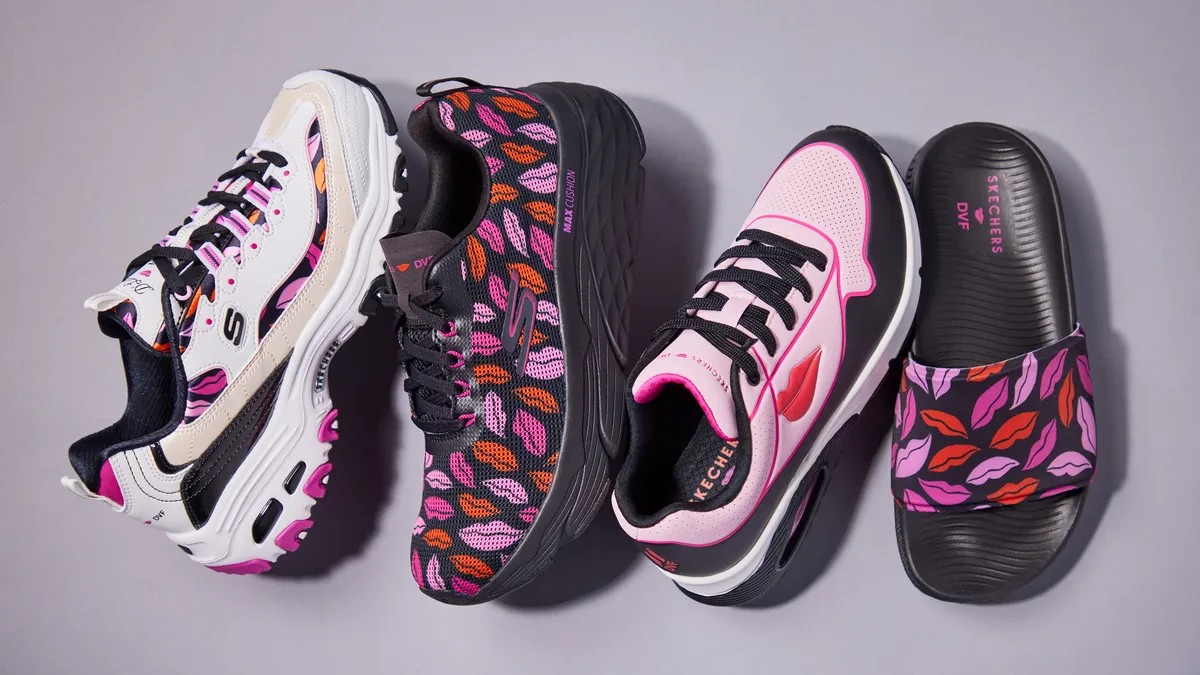Footwear brand Skechers expects supply chain costs to normalize this year as shipping prices come down, developments that will ease margin pressure and propel the brand to its goal of $10 billion in annual sales by 2026, the company’s CFO John Vandemore said at the UBS Consumer and Retail Conference on Wednesday.
Last year, the company’s margins were clipped by high supply chain costs, despite its attempt to raise prices.
“You saw 40-foot-high cube container rates go from an average of about $3,000 to $25,000. So for an average pair of shoes that took the landed embedded freight cost from something between 25 and 50 cents to $2 and $2.50,” he said. “Last year, quite frankly, wasn't my proudest year from a gross margin perspective, but I do believe you know a lot of those exogenous factors are beginning to abate, which should lead to improvement later on.”
Inventory management
The company had challenges managing inventory levels last year, to the tune of $90 million of excess warehousing and distribution related costs associated with the “inordinate appearance of inventory at a very quick pace” owing to shifting supply chain time frames, he noted.
Vandemore stressed that inventory management is a priority and crucial to protecting company margins, with Skechers attempting to operate as lean an inventory model as possible in its stores and warehouses.
“We don't buy a lot of speculative inventory,” he said. “Our process is to engage with customers early… in a way that allows us to book orders and book production against that,” thus minimizing the risk, he said.
Vandemore described a flexible logistics network where the company can easily shift inventory in response to unforeseen events.
In its direct-to-consumer business, where there may be more inventory risk, the company aims to move inventory to different markets as quickly as possible if an item can’t be sold. The company sells its footwear in a variety of physical store formats including concept stores, big box stores and outlets,
In the company’s fourth quarter earnings report last month, Skechers reported $1.88 billion in sales, up 13.5% year over year. The company expects to achieve sales between $1.80 billion and $1.85 billion during the first quarter of 2023.
Skechers’ “fortress balance sheet,” or a balance sheet that can stand up against economic shocks and unforeseen events, acts as a bulwark against uncertainty, Vandemore said. The company addresses its lease liabilities by being careful about choosing locations, and for speculative locations, by ensuring that lease agreements have two- or three-year exit clauses or some flexibility around resetting rates.
A focus on physical retail
The company is encouraged by the return to physical retail and plans to grow its physical footprint “where there are opportunities,” Vandemore said. While the firm is committed to boosting digital capabilities, it intends to prioritize aspects it considers core to the retail experience.
“By omnichannel, I really mean the omnichannel capabilities that matter,” he said. “A couple years ago, we all got carried away with the 15 different things you could do with a mobile device in a store… at the end of the day, not a lot of those matter.”














